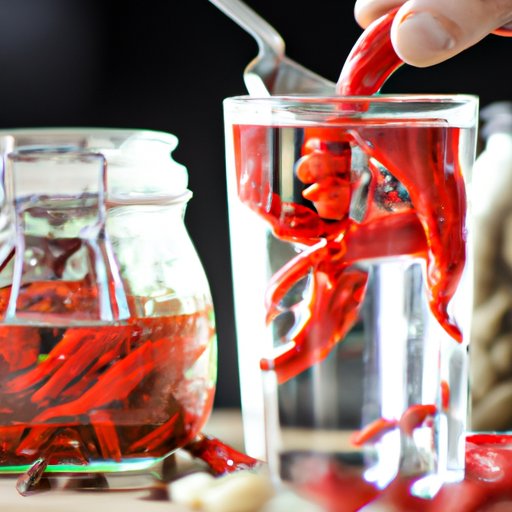
I. Introduction
Spicy dishes such as curries, sauces, and soups are enjoyed by many people. However, not everyone can tolerate a high level of spiciness. Whether you’re sensitive to spiciness, or you simply want to enjoy a milder version of your favorite dish, there are various ways to reduce the heat without compromising the flavors. In this article, we will explore some simple tips and expert insights on how to make something less spicy.
II. Experiment with Recipes
If you’re following a recipe and find it too spicy, don’t be afraid to experiment. Using recipes as a guide, you can reduce or replace the spicy ingredients to create a milder version of the dish. For instance, you can reduce the amount of hot pepper or chili powder, or substitute them with milder spices, such as cumin or paprika.
Another way to experiment is by using spices and herbs that can substitute hot peppers altogether. For instance, ginger, garlic, and onion can add depth and flavor to a dish without adding too much heat. Similarly, spices such as cinnamon, coriander, and turmeric can contribute to the complexity of a dish without making it too spicy.
III. Adaptation to Less Spicy Palettes
Certain cuisines, such as Indian and Thai, are known for being highly spiced. However, this does not mean that you cannot enjoy these cuisines if you have a less spicy palette. One way to adapt these dishes is by asking the server at a restaurant to make it milder. Another way is to modify the dish at home by reducing the amount of chili powder or hot pepper, or by using milder spices instead.
For instance, in Mexican cuisine, jalapenos and other hot peppers are used extensively. However, you can modify the dish by using milder peppers such as poblanos or bell peppers, or by reducing the amount of chili powder. You can also add ingredients such as avocado or sour cream to balance the heat of the dish.
IV. Cooling Techniques
One of the simplest ways to reduce the spiciness of a dish is by using cooling techniques. For instance, drinking water or milk can help to alleviate the heat. Sweet fruits such as mangoes or pineapples can also help to reduce spiciness. Additionally, balancing spiciness with sour or salty flavors can help to reduce the overall heat of the dish.
V. Expert Insights
If you’re still struggling to make your favorite dish less spicy, consider consulting experts such as chefs or nutritionists. They can offer unique tips on reducing spiciness in different types of dishes and offer alternative ingredients that can add flavor without adding heat. For instance, adding a squeeze of lime or lemon juice can help to balance the spiciness of a dish.
VI. Conclusion
In conclusion, making something less spicy does not mean compromising on the flavor or the integrity of the dish. By experimenting with recipes, adapting to less spicy palettes, using cooling techniques, and seeking expert insights, you can create a milder version of your favorite dish that you can enjoy without discomfort. Remember to have fun and explore different ways to reduce spiciness; you might discover a new ingredient or technique that you never thought of before.





